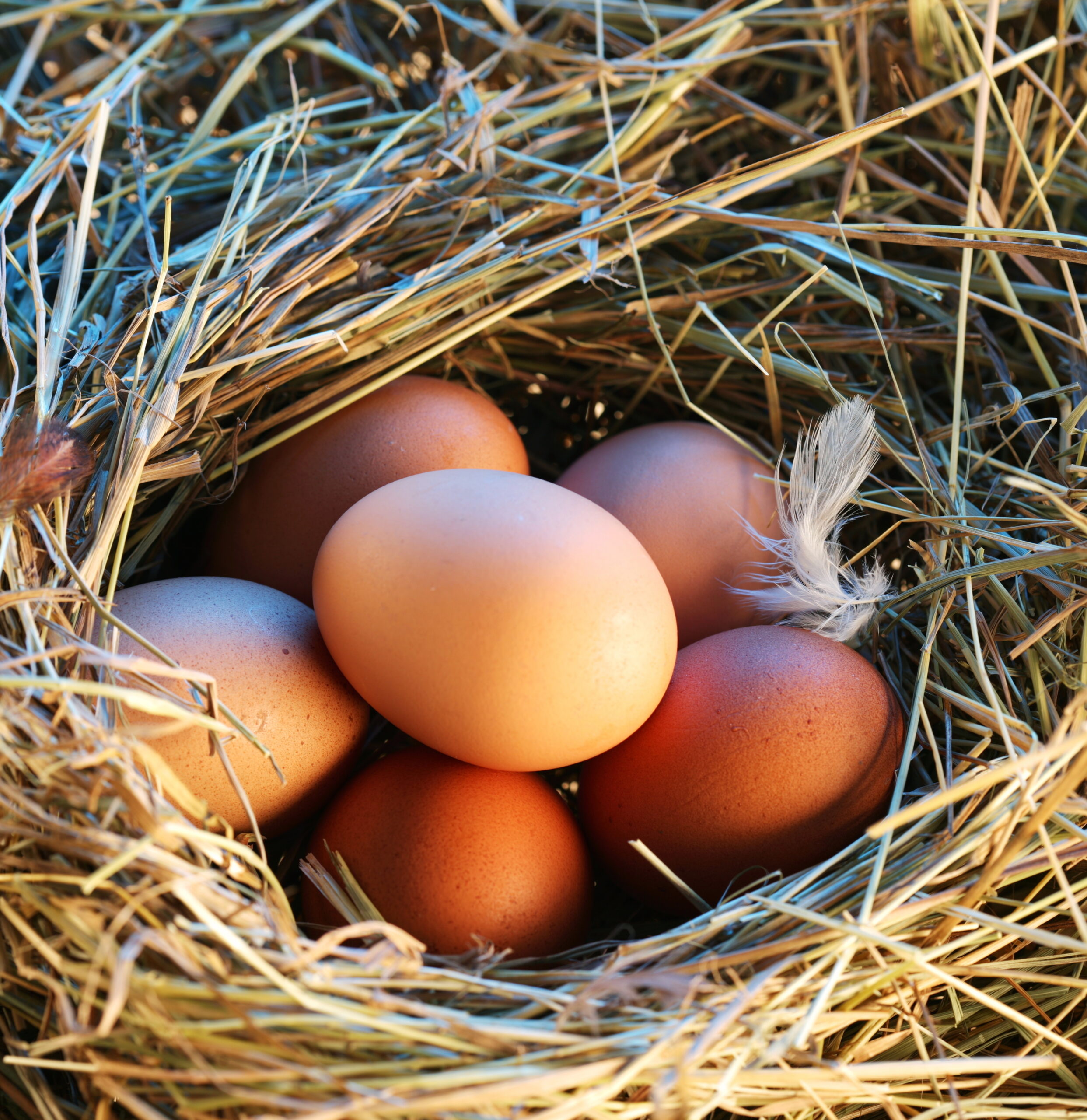This article on the treatment of hatching eggs is being republished from Acorn Hollow Bantams website with permission from Lou Horton.
Preparing the nest sites
I recently had a question about the handling and treatment of hatching eggs come in and it occurred to me that while I have touched on aspects of handling hatching eggs before, I can’t recall ever really covering the subject systematically.
I am going to assume that the basics of preparing the breeding flock for the upcoming season have been done. The birds are well fleshed but not over fat. They are fortified with all the vitamins and nutrients necessary to impart viability to the eggs that they are about to lay. Oyster shell should be provided about two weeks before you expect the first eggs. After the breeding season, the flock should not have access to the oyster shell.
Clean and properly prepared nest sites will not only ensure that the eggs are fairly clean but in cold weather the insulation of good bedding may prevent loss of the eggs from the cold. Sites should be somewhat isolated, be protected from the weather, and be facing away from the prevailing wind. They should also be deep enough to keep any eggs from rolling out of the nest. The nest box itself should, of course, fit the size of the bird that will use it. Oversized boxes can cause problems because they will encourage two or even more females to make nests in the box. Trust me, that is trouble if you intend to allow females to incubate naturally.
I have found that clean straw or absorbent pine or cedar shavings make the best nest materials. Provide plenty of the material but before you put it in, spray the bottom of the nest with a good mite/louse insecticide. Also plan to periodically clean and replace the bedding as some females may foul the nest with their droppings. Even with a good selection of nest sites available, some birds will lay their eggs in the open pen, at least at first. Those are usually first year birds and they usually catch on to using the nests fairly quickly.
 Collecting the eggs
Collecting the eggs
Egg collection is important, especially during times of extreme cold. As an egg cools after it is layed, it pulls in the surrounding air. If that air is very cold, the egg can be damaged relatively quickly. The more often the eggs are collected, therefore, the better. A germ can be damaged or killed by the cold even if the egg is not cracked. Be careful in handling the cold eggs after they are collected. A solid container with plenty of soft bedding in the bottom is to be preferred over a wire basket during the coldest weather.
Cleaning and storing the eggs
Eggs should never be stored dirty. The shell surface should be cleaned as soon as possible to avoid further contamination of that egg or surrounding eggs. I prefer to clean the eggs with a flexible “Brillo” pad if the egg is not too soiled. If I must wash an egg, I use water warmer than the interior of the egg with a mild disinfectant. I then check to see that my mating ID markings (I use pencil) have not been washed off. I let the eggs air dry. Eggs which are excessively soiled are havens for bacteria and probably should be discarded.
I never store hatching eggs longer than seven days if I can help it. I store them in clean egg flats propped up under a brick on one end. This keeps the germ from sticking to the side of the membrane. I shift the bricks under the flats from one side to the other each day. Eggs should be stored with the air cell up. Such a procedure becomes more important the longer the eggs are stored. In terms of temperature, the eggs do best between 50 and 60 degrees F, with some humidity in the air. The loss of moisture is probably the most critical factor when eggs are stored too long. Remember, you can never replace lost moisture in a hatching egg. All you can do is slow the moisture loss process down.
One last thing. Never set cold eggs immediately after being brought in from the cold. Always let them warm gradually for at least a couple of hours. When setting eggs that were shipped to you, let them “settle” for 24 hours before setting them.
Everything I have said about the treatment of hatching eggs applies equally as well to waterfowl or chicken eggs. Chicken eggs tend to be somewhat more porous than those of waterfowl so not storing them too long is even more important.
By Lou Horton
